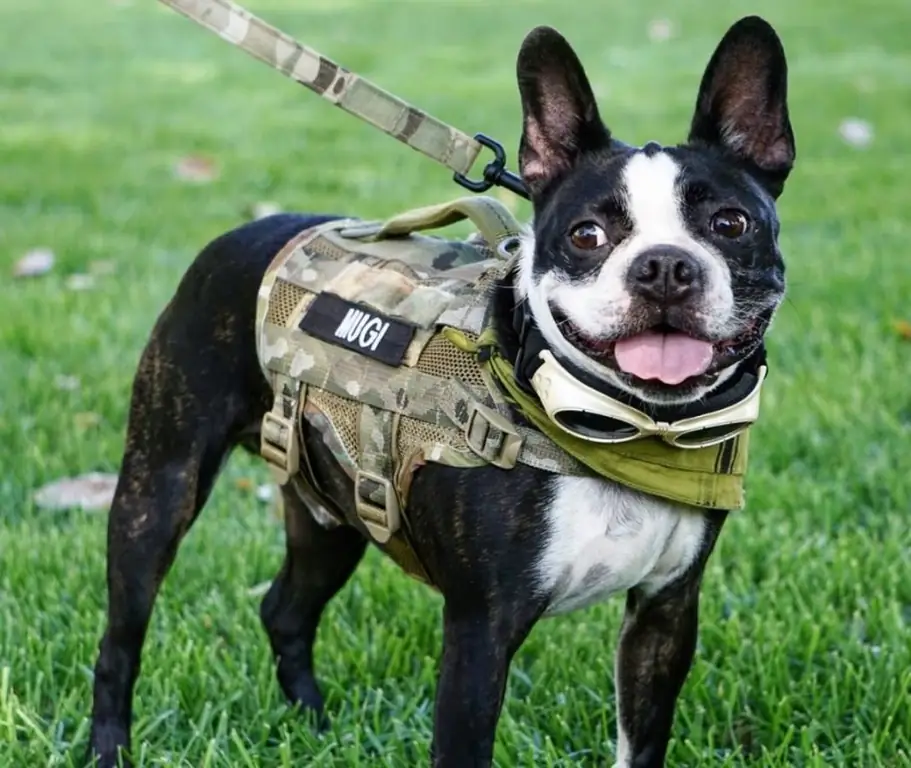
Inhaltsverzeichnis:
- Autor Sierra Becker [email protected].
- Public 2024-02-26 04:45.
- Zuletzt bearbeitet 2025-01-22 22:11.
Wenn Sie sich plötzlich entscheiden, die Garderobe Ihres kleinen Sohnes oder Ihrer kleinen Tochter zu aktualisieren, und Sie etwas Originelles tun möchten, Freizeit und Lust haben, dann versuchen Sie, selbst ein T-Shirt zu nähen. Der Artikel liefert Ihnen Muster eines Kinder-T-Shirts für einen Jungen. Aber das ist nicht alles. Wenn Sie verstehen, wie man Muster richtig erstellt, können Sie sie leicht für ein Muster eines Kinder-T-Shirts für Mädchen neu erstellen. Erfreuen Sie sich und Ihr Kind mit den Ergebnissen!

Was brauchen Sie?
Um ein T-Shirt für Ihr Kind zu nähen, müssen Sie Folgendes vorbereiten:
- Stoff. Wählen Sie nicht nur die Farbe, sondern auch das Material gut aus. Zuallererst sollte es bequem und atmungsaktiv sein und sich beim Waschen nicht verschlechtern.
- Fäden passend zum Stoff.
- Schere zum Schneiden. Sie sollten den Stoff gut schneiden, nicht zerreißen.
- Pins.
- Nadeln.
Erforderliche Maße
Für die korrekte Konstruktion des Musters sollten Sie sorgfältig die erforderlichen Maße nehmen:
- POG-Büste;
- POSH - halber Halsumfang;
- Tiefe und Breite des Armlochs;
- CI - Produktlänge;
- DR - Ärmellänge;
Natürlich können Sie universelle (Standard-)Maße verwenden. Sie finden sie in der Tabelle der Kindermaße. Aber es ist besser, wenn Sie bei Ihrem Sohn oder Ihrer Tochter Maß nehmen. Sie können selbst ein Muster erstellen, es ist nicht so schwierig, wie es scheinen mag.

Hier ein paar Details, die eine Vorstellung davon geben, wie man Maß für ein Kinder-T-Shirt-Schnittmuster von einem Kind richtig nimmt:
- Um das Maßnehmen in Bezug auf die Taillenlinie zu erleichtern, binden Sie einen Stoffbesatz um den Gürtel des Kindes.
- Das Maßband sollte gut und eng am Körper des Kindes anliegen, es sollte nicht zu stark durchhängen, aber nicht zu fest anziehen.
- Messen Sie beim Messen der Brust an der breitesten Stelle, ohne das Maßband anzuziehen oder zu lockern.
- Wir messen die Taille an der schmalsten Stelle.
- Bei der Bestimmung des Hüftvolumens erfolgt die Messung an den konvexsten Stellen des Gesäßes.
- Halsumfang wird an der Basis gemessen, näher an den Schlüsselbeinen.
- Wir messen die Länge des Produkts ab dem siebten Halswirbel.
- Die Breite der Schultern wird anhand der konvexsten Punkte von einer Schulter zur anderen berechnet.
- Die Breite des Rückens wird durch die Mitte entlang der Linie der Schulterblätter gemessen.
Machen Sie anhand der gemessenen Maße und anhand des Schnittmusters unten ein Schnittmuster für ein Kinder-T-Shirt.

Was als nächstes zu tun ist
ÄrmelmusterEs ist auch einfach, Baby-T-Shirts zu machen. Zeichnen Sie eine vertikale Linie und setzen Sie einen Punkt oben auf das Blatt. Drei Viertel (3/4) der Tiefe des Armlochs und der Länge des Ärmels gemäß den Maßen, die Sie genommen haben, legen Sie von der Spitze nach unten entlang beiseite. Sie haben zwei Punkte. Zeichne daraus zwei horizontale Linien beliebiger Länge.
Messen Sie auf dem Muster auf der Vorderseite des T-Shirts die Länge des Armlochs. Wir übertragen den gemessenen Wert auf das Muster von der Seite des Ärmels - wir erh alten ein Segment. Nennen wir es VO. Legen Sie ab Punkt O das Segment OB 1=VO. rechts beiseite
Als nächstes teilen wir die erh altenen Segmente VO und OB 1 in 4 gleiche Teile. Wir werden das Armloch des Ärmels wie im Muster gezeigt bauen. Du kannst die Ärmel unten um ca. 2-2,5 Zentimeter auf jeder Seite schmaler machen.
Nähen eines Produkts nach einem Muster eines Kinder-T-Shirts
Fangen wir an zu nähen:
- Schneiden Sie alle notwendigen Details aus dem Stoff aus, entsprechend Ihrem Muster eines Kinder-T-Shirts. Vergessen Sie vor dem Ausschneiden der Elemente nicht, die Zeichnung nochmals zu kontrollieren. Wie das Sprichwort sagt: „Zweimal messen, einmal schneiden.“
- Es ist notwendig, die Ärmel an die Vorderseite unseres T-Shirts zu nähen. Legen Sie die Ärmel einander gegenüber und stecken Sie die Stoffteile zusammen.
- Ärmel an der Vorderseite des Produkts annähen.
- Die freie Rückseite der Ärmel wird in gleicher Weise mit der Rückseite des T-Shirts verbunden und vernäht.
- Wir fixieren die freien Seitenkanten des T-Shirts und die Ärmelkanten mit Stecknadeln. Nähte.
Beende die Kanten. Von allen Kanten biegen wir zuerst um 0,5 cm, dann um weitere 1 cm und nähen. Wenn Sie möchten, können Sie die Kanten mit Klebeband abschließen oderSchrägbindung.
Herunterfahren
Schauen Sie sich das fertige Werk genau an und geben Sie ihm den letzten Schliff. Stellen Sie sicher, dass sich nirgendwo lose Fäden befinden. Schneiden Sie bei Bedarf überschüssiges ab. Sie können das fertige T-Shirt verzieren. Dazu können Sie verschiedene Arten von Patches oder Thermoaufklebern verwenden. Bereit? Jetzt kannst du das T-Shirt anprobieren.
Nähtricks

Damit die Arbeit qualitativ hochwertig und genau ausfällt, sollten Sie einige Nuancen kennen:
- Wenn Sie einen Stich nähen müssen, dann nähen Sie ihn im Zickzack mit einer Neigung. Dann knittert und strafft sich der Stoff nicht.
- Verwenden Sie die Schwämme auf beiden Seiten der Naht, dann ist es einfach, ein langes Stück Stoff zu bewegen, ohne die Naht zu bewegen
- Verwenden Sie Pauspapier, um den Stoff gleichmäßig zu nähen. Zeichnen Sie eine gerade Linie darauf, befestigen Sie sie am Stoff und nähen Sie. Wenn Sie fertig sind, reißen Sie einfach ein Stück Pauspapier ab!
- Sie können die Stichrichtungstabelle verwenden. Es ist sehr bequem. Außerdem sieht es besonders auf dünnen Stoffen schön und ordentlich aus.
- Wenn Sie mehrere Stofflagen auf einmal nähen müssen, befestigen Sie diese mit kleinen Wäscheklammern oder Büroklammern, dann „verlässt“sich der Stoff nicht.
- Um den Stoff gleichmäßig zu f alten, verwende ein Stück Papier und ein Bügeleisen. Biegen Sie den Stoff entlang der Seitenlinie des Lakens und gehen Sie mit einem Bügeleisen darüber.
- Legen Sie ein Stück Pappe unter den Nähfuß und selbst schwer zu nähende Stoffe „gehen“problemlos.
- Um das Muster sofort mit einem Countdown für das Taschengeld einzukreisen, verbinde zwei Bleistifte mit einem Gummiband und umkreise sie. Wenn die Prämie sein sollAußerdem können Sie drei Stifte anschließen. Heben Sie die in der Mitte an, damit keine zusätzlichen Zeilen zurückbleiben.
- Seife ist eine der besten Methoden, um Spuren auf Stoffen zu hinterlassen.
Empfohlen:
Hundeweste: Schnittmuster, Nähtipps. Hundekleidung selber machen

In der k alten Jahreszeit brauchen nicht nur Menschen Kleidung. Auch Hunde brauchen Isolation, um sich beim Laufen durch Pfützen und Schnee nicht zu erkälten. Es ist wichtig, eine bequeme Option zu wählen, damit sie leicht anzulegen ist und die Bewegung des Haustieres nicht einschränkt. Die beliebteste Option ist eine warme Weste für Hunde, die sich leicht mit eigenen Händen herstellen lässt
Geschenk zum Selbermachen für Kinder - interessante Ideen. Geschenke für Kinder zum Jahreswechsel und zum Geburtstag

Der Artikel beschreibt einige Geschenke für Kinder, die Sie mit Ihren eigenen Händen machen können. Ein originelles Geschenk für ein Kind, das mit eigenen Händen geschaffen wurde, ist wertvoller als ein gekauftes, denn bei der Herstellung legen die Eltern ihre ganze Liebe und Wärme in das Produkt
Schnittmuster für ein Sommerkleid für Kinder: Ideen für den Sommer

Sommerkleid ist die bequemste Kleidung für ein Kind im Sommer. Daher erklären wir Ihnen in diesem Artikel, wie Sie die einfachsten Muster dieser Produkte selbst erstellen können. Also nähen wir ein sommerliches Sommerkleid für die Kleinen
Bolero: Schnittmuster und Nähtipps

Bolero ist ein vielseitiges Accessoire, das in der Garderobe einer Frau nicht fehlen darf. Es wird helfen, ein langweiliges Kleid oder Oberteil zu verwandeln, ein neues Image zu schaffen und offene Schultern zu bedecken
DIY Stuhlhusse: Schnittmuster, Materialauswahl, Nähtipps

In diesem Artikel erfahren Sie, wie Sie einen Stuhlbezug mit Ihren eigenen Händen nähen, was Sie dafür benötigen, welcher Stoff besser zum Nähen dieses Produkts geeignet ist, damit es lange Zeit sein Aussehen behält vorgeschlagene Muster und Herstellung Schritt für Schritt. Ein unerfahrener Meister sollte in der Lage sein, korrekt zu messen, dann müssen Sie das Produkt nicht erneut umformen oder annähen
